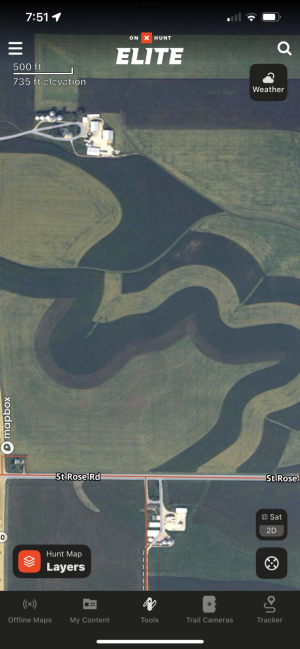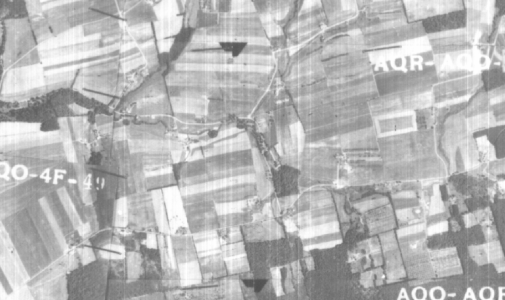-
If you are posting pictures, and they aren't posting in the correct orientation, please flush your browser cache and try again.
Edge
Safari/iOS
Chrome
You are using an out of date browser. It may not display this or other websites correctly.
You should upgrade or use an alternative browser.
You should upgrade or use an alternative browser.
Ag guys, what’s going on here
- Thread starter Howboutthemdawgs
- Start date
BuckSutherland
5 year old buck +
They are contour farming and planting alternating crops to try and keep their soil on those hills. If you wanna see it in action check out a youtube channel called "how farms work." He is from SW Wisconsin area. They do lots of contour farming on their ground cause they farm so many erodible hills.
Howboutthemdawgs
5 year old buck +
Great explanations. That makes perfect sense given that it is the hills regions
westonwhitetail
5 year old buck +
We had a wedding near Council Bluffs a couple weeks back and it's a unique practice they have in that area. They are like small berms running on the contour of the hills. I wonder if there is NRCS incentives for this type of practice to reduce soil loss and probably promote infiltration?We picked up a planter by Council Bluffs, IA last year and we drove by some of that. Weird looking for sure!
View attachment 69634
T-Max
5 year old buck +
It reminded me of those rice paddocks in China. Almost terraced.We had a wedding near Council Bluffs a couple weeks back and it's a unique practice they have in that area. They are like small berms running on the contour of the hills. I wonder if there is NRCS incentives for this type of practice to reduce soil loss and probably promote infiltration?
Wind Gypsy
5 year old buck +
It reminded me of those rice paddocks in China. Almost terraced.
A lot of it IS terraced far as I can tell.
First time i really noticed it and considered the work involved was snow goose hunting some of those fields in MO. I was surprised they went through that much trouble.
Last edited:
J B
5 year old buck +
Howbout- One of those screen shots is less than a half mile from where I grew up! The ground there is fairly flat, but does have a slight roll to it. Like others said, it’s to help slow the water down when we get a big rain. It does work. Where I live now, the old aerial photos do not have contours and the land is damaged pretty badly. It’s contoured now, but a lot of damage has been done.
FarmerDan
5 year old buck +
Oh my goodness! Am I that old? It was explained above. It's called a lot of things and was really common when I was a kid. Farming on the contour; strip tilling, and other terms probably common to specific geographies. Back when I was a kid...sometime after the war between the states...it was quite common. Plowing the soil was common. When you flop the soil over with an x-bottom moldboard plow you create channels at the end of each plow blade. So, if you follow the land contour the channel is perpendicular to the slope of the land causing drainage to be captured in each of the small furrows created by plowing. People from what is now NRCS, then ASCS, laid out the contours, basically a topo map on the surface of the fields. Unfortunately this slowed the planting progress and eventually the whole idea got plowed under. It's still practiced some places especially in small fields with significant slope. Each field subsection - or subfield - was planted alternately. Corn -alfalfa or some other spring annual next to a perennial forage. Also, in the aerials displayed above there are CRP buffers on the field edges. Another conservation practice. Think of all this as generative agriculture. No need for the "re" part.
FarmerDan
5 year old buck +
S.T.Fanatic
5 year old buck +
Contour strips of alternating corn and alfalfa. Very common in my neck of the woods.
Sent from my iPhone using Tapatalk
Sent from my iPhone using Tapatalk
Similar threads
- Replies
- 21
- Views
- 1K
- Replies
- 16
- Views
- 3K





